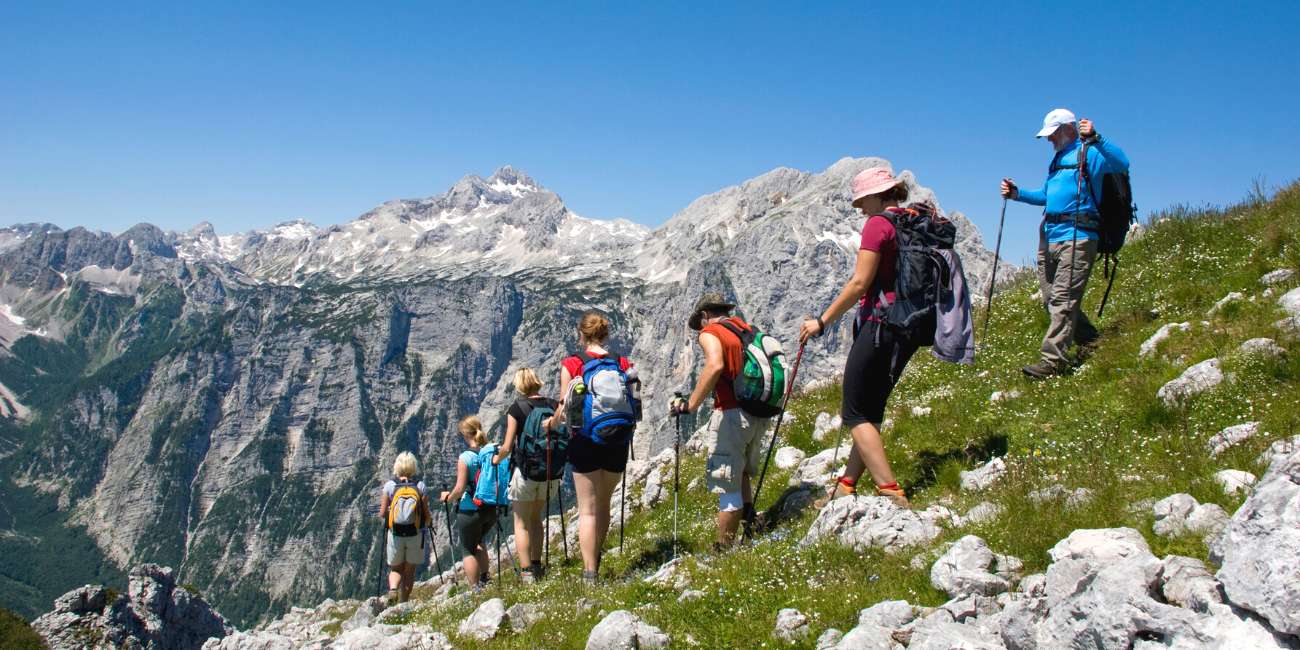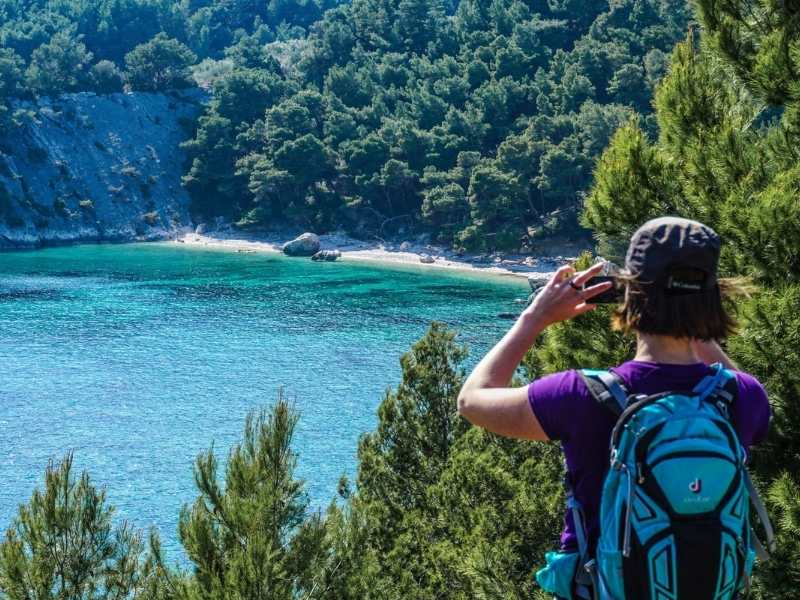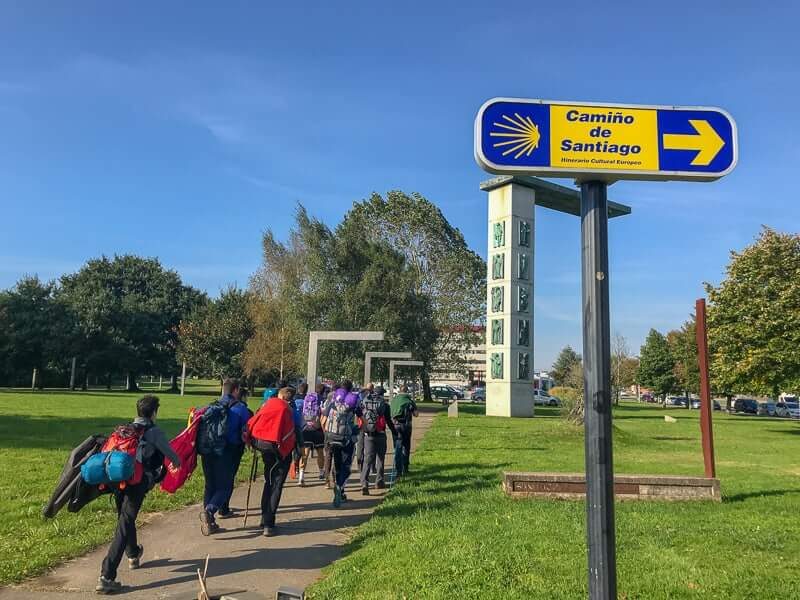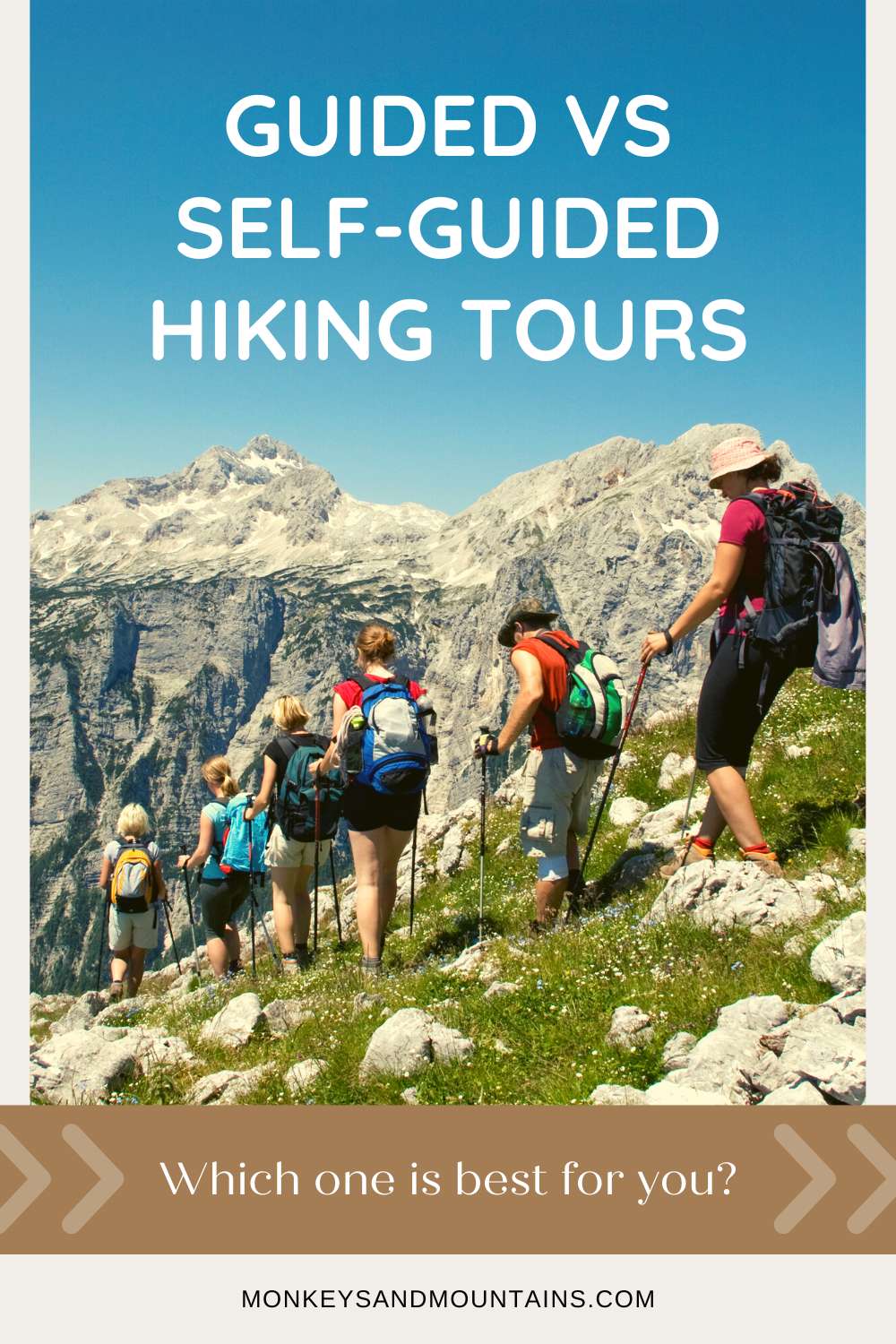Which one is better? A guided or self-guided hiking tour? Or doing it totally on your own? It really depends on the type of hike and how experienced you are. Read on to see the pros and cons of each, as well as specific examples.
When you’re planning a hiking trip, whether it’s one day or a multi-day trek, there are three ways you can do it:
- Guided Hike
- Self-Guided Hike
- Organize Everything on your own
I’ll explain what each one is and then the pros and cons of each type of hiking tour. I’ll also provide examples of specific hikes and their characteristics that I think make them a good fit for each category.
What is a guided hiking tour?
Table of Contents
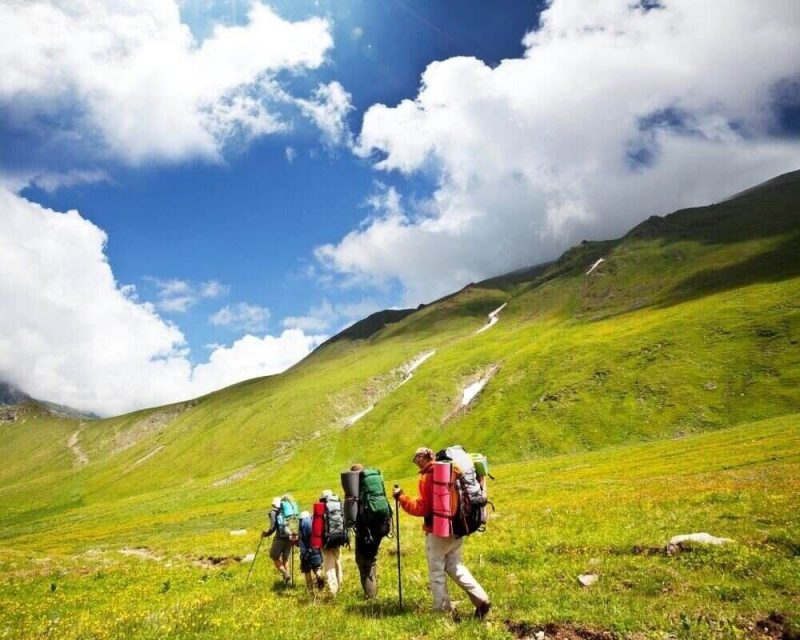
A guided hike is a type of hike where a trained and knowledgeable mountain guide leads a group of hikers (could be a group of private organized friends or a group of strangers) along a predetermined route.
A mountain guide will provide information about the area and ensure the safety of the group. They also take care of logistics like hiking permits.
What is a self-guided hiking tour?

A self-guided trip is a type of hike where you independently explore a predetermined route based on the expertise and experience of a hiking company, (like my company, Monkeys and Mountains) that provides logistical services such as booking accommodations and supplying a map/GPS route while providing additional valuable information and answering any questions you may have.
Most self-guided hiking tours also have a phone number you can contact if you run into trouble on the trail. While they handle the logistics, you have the freedom and flexibility to set your own pace while hiking and enjoy the experience at your own leisure and with people of your choice.
What’s involved in organizing a hike on your own?

On this type of hike, you plan everything yourself. You plan your route, book your accommodations and are responsible for everything.
It typically involves a lot of research and consulting multiple different sources, whether it’s guide books, hiking apps for routes or specific online groups for the hike that you’re doing.
So now you know what each type of hiking tour is, let’s discuss the pros and cons of each along with examples of hikes suitable for each.
Guided Hiking Tours: Pros and Cons
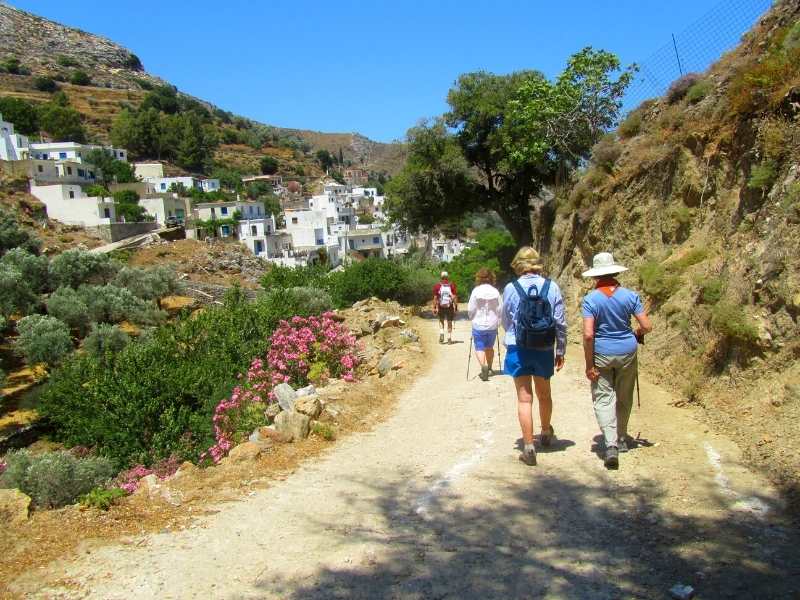
Pros of Guided Hiking Tours:
- Safety: Mountains guides have extensive training to lead and manage hikers, ensuring everyone stays safe on the hike. They also have Wilderness First Aid training so they’re able to handle any emergencies that may occur on the trail. If you’re an inexperienced hiker, a guided tour can also be a great way to learn more from a guide.
- Local Knowledge: Mountain guides have an in-depth knowledge of the area, its history, flora, and fauna. They can provide valuable insights and share interesting stories that you wouldn’t otherwise know.
They also know the hiking route exceptionally well, so they know where the best viewpoints are for beautiful scenery, the best place to spot wildlife, and where the shortcuts are in case of bad weather.
Plus, other insider secrets that make your hike more enjoyable – like the best time to get a hot shower before the hot water runs out at a mountain hut. - Convenient: On a guided hiking tour, all of the logistics, like transportation, accommodations and permits, are taken care of. This saves you a ton of time and hassle, so you can relax and just focus on hiking. You also won’t have to worry about route-finding since you’re following your mountain guide.
- Group Experience: Guided hiking tours can be a fun way of meeting new people who share a similar interest. It’s also a good option if you don’t want to hike alone but don’t have any friends who want to do the hiking tour.
Cons of Guided Hiking Tours:
- Lack of Flexibility: Guided hiking tours follow a set itinerary and pace, so if you’re a fast hiker, you’ll have to wait for the rest of the group. Or if you’re a slow hiker, you may feel pressure to keep up. There’s also not much room for spontaneity or deviating from the planned route.
- Cost: Guided hiking tours are usually the most expensive of the three types of hiking tours as you’re paying for the mountain guide and the convenience of having someone organize all the logistics for you.
- Limited Solitude: Guided hiking trips can be difficult if you are an introvert or enjoy hiking alone, as you’ll be surrounded by a group of people on your hike.
Check out my post on How to Cope on a Group Tour When You Don’t Fit In for tips, which also apply to introverts.
Examples of Hiking Tours That Are Good to Do With a Guide
Hikes at a High Elevation
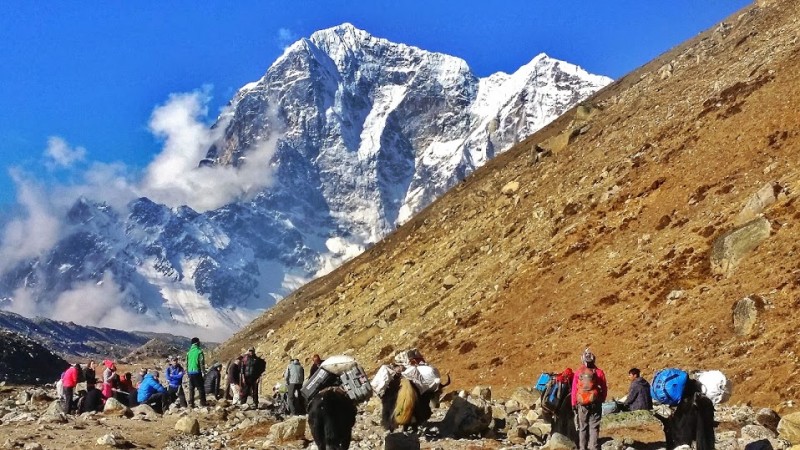
If you’re hiking at a high elevation where there’s a good chance you’ll suffer from altitude sickness, I’d recommend a guided hiking tour so that you have a guide who can help you should you get sick or arrange for emergency rescue if you need to abort the hike.
Plus, based on their knowledge, they can help reduce the onset of you getting altitude sickness by monitoring you and adjusting the pace accordingly.
A good example is the trek to Everest Base Camp. While the route is easy to follow and well-marked, almost everyone on our tour experienced altitude sickness.
This post shows why I was very glad to be on a guided tour. Hint: it could save your life.
Remote Hikes with Poor Signage or Infrastructure

Many hikes are located in remote mountain areas with little to no infrastructure, i.e. no mountain huts or signs. That also means you’ll be carrying your tent, food, etc., which makes the hike much harder.
Plus, if it’s not a popular hike, you’re unlikely to run into many other hikers, so you’re on your own if you run into an emergency. And it’s likely you won’t have any mobile reception.
Unless you’re a very experienced hiker with excellent navigation and map-reading skills, with a high level of fitness, you should do this type of hike as a guided hike.
An example of this is the guided hike in Jordan from Dana to Petra, following a historic trading route starting in the Dana Biosphere Reserve and ending in Petra, a UNESCO World Heritage Site.
I think I saw one sign on the entire trail, and it wasn’t obvious where to go. And only a few times did we come across other hikers. Most of the time, we were on our own – which I loved, knowing that I had the safety of a guide.
Some nights there were no accommodations, so we had to camp. Because I was on a guided tour, I’d hike and arrive at a set-up camp, a welcome treat after a long day of hiking in the desert.
I was also inexperienced at hiking in the desert and in such hot temperatures (it was unseasonably warm when I did it in May). While I didn’t experience any issues, I was glad to have an experienced guide in case I did. I would definitely recommend doing the Jordan Trail as a guided vs self-guided tour for these reasons.
Hikes That Require Hard-to-Get Permits or Require You to Go with a Guide
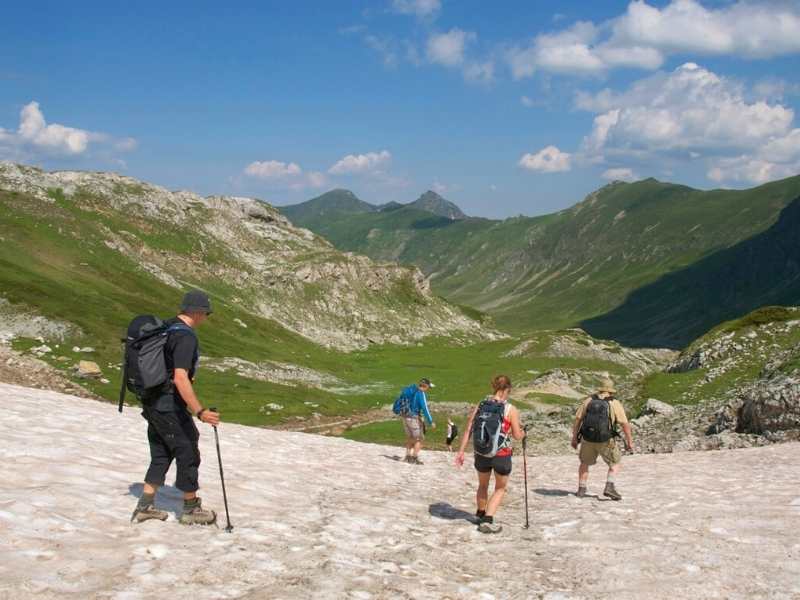
Some hikes require permits that are difficult to get, like the Via Dinarica, which takes place in Montenegro, Serbia and Albania. You need a special permit (not just a passport) to hike across the border from Montenegro into Serbia by foot since there’s no passport control.
You can get this by yourself, but it’s a pain and needs to be done in advance. I was more than happy to have this pre-arranged for me.
Other mountain treks like the Snowman Trek in Bhutan legally require you to go with a guide – as is true for all tourists entering Bhutan. In this case, the only way to do the trek is with a licensed mountain guide.
Related Reading: Hiking, Trekking and Mountaineering: What’s The Difference? And Why You Should Care
Self-Guided Hiking Tours: Pros and Cons
Pros of Self-Guided Hiking Tours:
- Flexibility: You have complete control over your pace for the day, when you start, how many hiking snack breaks you take and how long you stop for lunch. You can also add additional peaks if you’re up for it and the route allows, or take shortcuts if you’re tired or if you see bad weather rolling in (again if the route allows for it).
Self-guided treks also give you time to pursue additional interests alongside your hike, like photography or bird watching, without worrying about holding anyone else up.
Note: on self-guided hiking trips, your accommodations will have been booked in advance, so you’ll still have to make it from Point A to Point B each day, but you have more control over how you get there and how long you take to get there. - Cost: Self-guided hiking tours are usually cheaper than
guided tours, as you’re not paying for the cost of a mountain guide. - Huge Time-Saver: Your logistics will all be taken care of when you book a self-guided hiking tour. I.e. your accommodations will be booked, your route will be planned, and you’ll be given a map or GPS tracks of the route.
When I planned my own Tour du Mont Blanc, it took me hours and hours to plan the route and book all the accommodations. That was my motivation to start offering Self-Guided Tours of the Tour du Mont Blanc.
Some, like our self-guided Tour du Mont Blanc, will even include in-person briefing to update you on the latest trail conditions and to answer any last-minute questions you may have. - May Include Luggage Transfer: On some self-guided hiking tours, it’s possible to have your luggage transported each day so that you only have to hike with your day backpack, like on our Croatia hiking tour from Split to Dubrovnik.
But check this in advance as for logistical reasons, it’s not possibly or prohibitively expensive, like on the Alta Via 1 tour in Italy’s Dolomites. - You Choose Your Hiking Buddies: You choose who you hike with, whether it’s hiking alone, with your partner, or with a group of friends. It can be a great way to bond with friends and create deeper connections.
Plus, you won’t have to worry about hiking with a group of strangers, where there’s often that one person that gets on your nerves.
Cons of Self-Guided Hiking Tours:
- Responsibility: While you’ll be given the tools and have access to insider information, you’re ultimately responsible for your own safety and have to navigate your own way on the route.
- Lack of Local Knowledge: Without a mountain guide, you won’t have the same level of local knowledge and insights into the area.
So if you have a specific interest, i.e. bird watching, be sure to ask your hiking tour company in advance about the best places for bird watching.
Still, you won’t get the local legends or inside stories that only a local guide knows.
Examples of Hikes That Are Good to Do as a Self-Guided Hike
Popular Hikes with Good Signage and Infrastructure, like Mountain Huts
Self-guided tours are a good option if:
- the route is well-signed
- it’s popular – meaning you’ll run into other hikers frequently if you do run into problems
- if there are mountain huts or other accommodations, you can stay and have a meal; especially if those accommodations need to be booked months in advance and can require insider knowledge when the most popular accommodations are already full, like the Tour du Mont Blanc or Alta Via 1.
This is true for many hikes in Europe. Self-guided hikes are my favorite type of hike and what I personally do the most. It’s also why we mainly offer self-guided hiking tours in Europe.
It’s a Non-Techincal Hike
While the hike may still require a high level of fitness, it doesn’t require any special skills like ropes or pose any significant dangers, like super-exposed sections that are prone to wind storms, then a self-guided trip is a good option.
Examples of hiking routes that are good options for a self-guided tour vs a guided tour include:
- Tour du Mont Blanc: Hiking Tours
- Tour du Mont Blanc: How to Effortlessly Plan Your Epic Trek
- Alta Via 1 Hiking Tour in Dolomites Italy Entire, North or South Route
- The Haute Route: Hiking Tour
- Croatia Hiking Tour: Split to Dubrovnik
- Cinque Terre & Beyond Hiking Tour in Italy
- Coastal Hike: Costa Brava, Spain to France
Organizing a Hike On Your Own: Pros and Cons
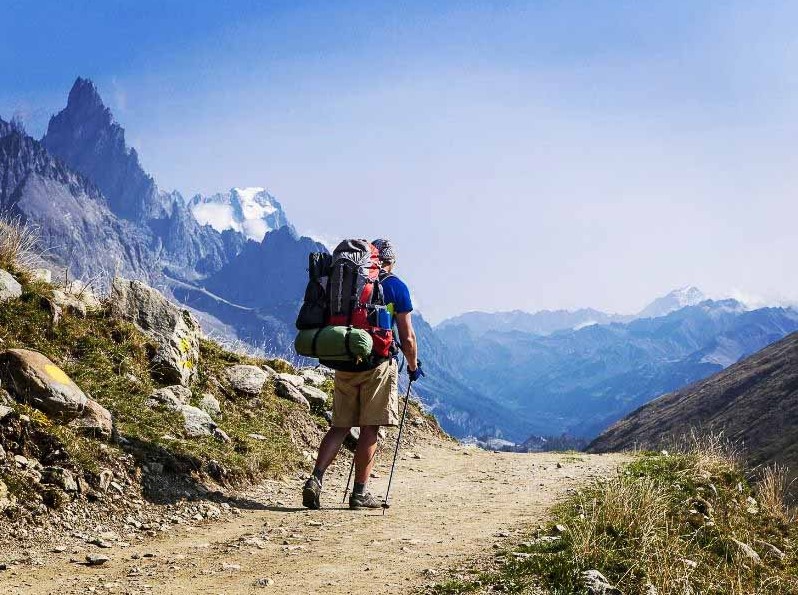
Pros of Organizing a Hike on Your Own
Ultimate Flexibility: You have complete control over your hiking route, pace itinerary, and pretty much everything else. You choose whether to book your accommodations in advance or on the fly.
You also choose to do a mix of camping and staying in mountain huts (when available). And you can also combine other interests with your hike, whether it be climbing, photography or something else.
Cheapest Option: Organizing everything by yourself is almost always the cheapest way of hiking. So it’s a good choice if you’re on a tight budget.
You Love Planning the Logistics: Some hikers love the part of researching and planning their routes. For them, this is almost as fun as the hike itself.
Cons of Organizing a Hike on Your Own
Time-Consuming: Since you’re planning everything on your own and doing your own research, it’s also the most time-consuming option.
You are ultimately responsible: If something goes wrong, it may be harder to get help since you won’t be able to rely on a mountain guide or call the company you booked a tour with, like in the case of a self-guided tour. So you should be an experienced and adventurous hiker.
Examples of Hikes That Are Good to Organize On Your Own
Day Hikes:
I organize almost every day hike I do on my own as it requires minimal planning, and I enjoy the benefits of hiking alone or with my chosen hiking buddy(ies).
Popular Hikes with Good Signage and Plenty of Food and Accommodation Options
If a hike is easy to follow and popular so that you’ll run into other hikers and has lots of places to eat and stay along the way, then you can save yourself a lot of money by planning it on your own.
A good example of this is the Camino de Santiago. I’ve only done the last 100 km (which I did as a self-guided tour), but most pilgrims that I know that walked the entire way did it on their own and loved doing it that way.
Also, as there are so many places to stay, you don’t usually need to book accommodations in advance, so you have the flexibility of deciding how far to walk each day, knowing that the next accommodation may be only an hour or two further.
Now you know the pros and cons of guided vs self-guided tours and doing it on your own. You, also know which type of hike or trek is most suited to each type of tour. All that’s left is to hit the trails!
Share this post with someone who you want to hike with, and be sure to check out our hiking tours in Europe.
